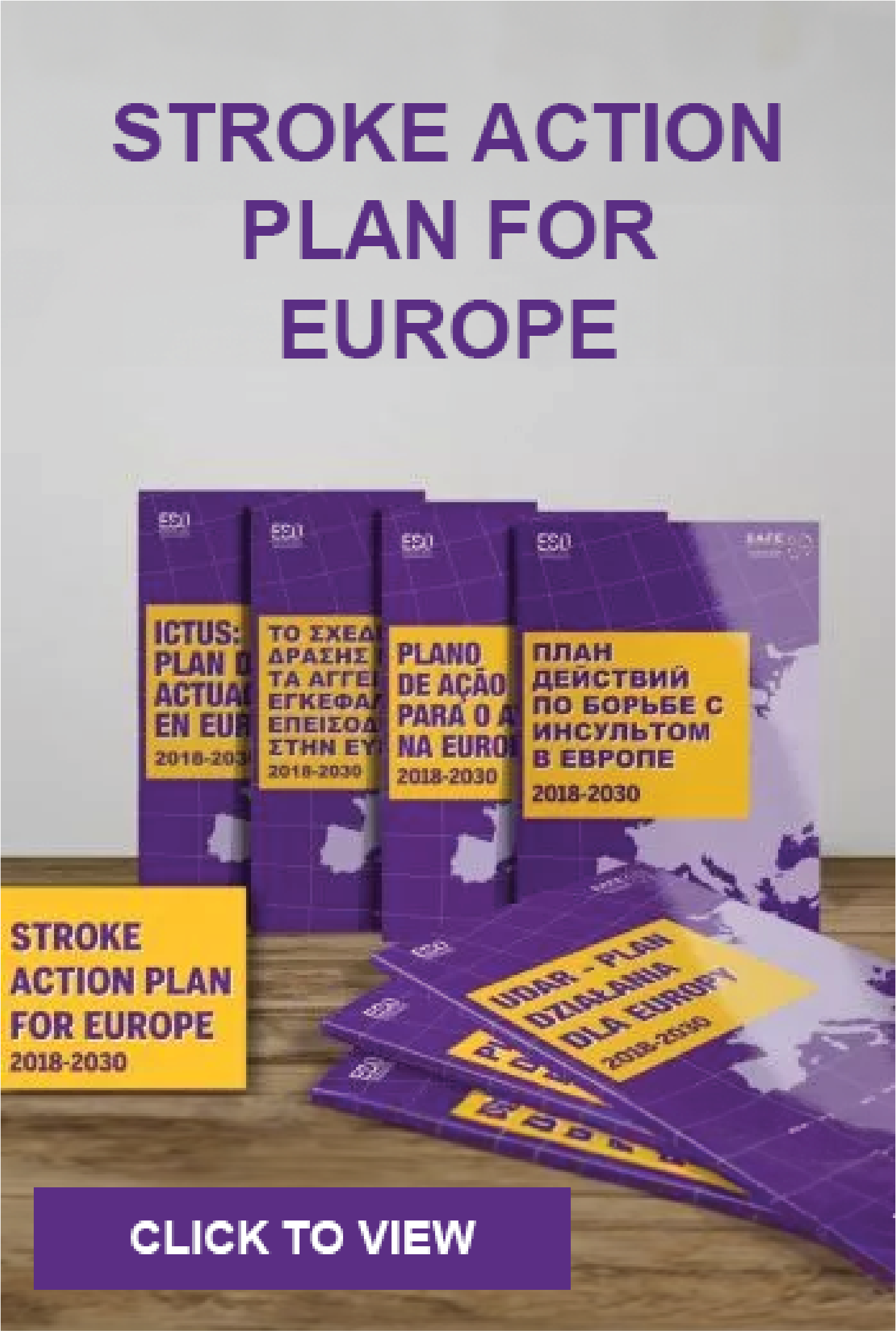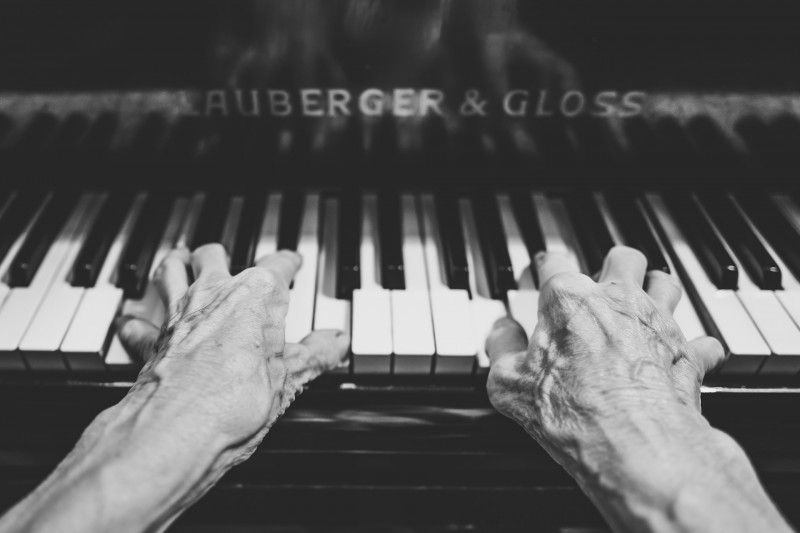
Sep 3, 2019
First published on ScienceDaily.com
Ever wondered what was going on in the brain of John Coltrane when he played the famous solo on his album Giant Steps? Researchers at the National Institute of Information and Communications Technology (NICT), Japan, and Western University, Canada, have succeeded in visualizing how information is represented in a widespread area in the human cerebral cortex during a performance of skilled finger movement sequences.
Contrary to the common assumption, the researchers found that overlapping regions in the premotor and parietal cortices represent the sequences in multiple levels of motor hierarchy (e.g., chunks of a few finger movements, or chunks of a few chunks), whereas the individual finger movements (i.e., the lowest level in the hierarchy) were uniquely represented in the primary motor cortex. These results uncovered the first detailed map of cortical sequence representation in the human brain. The results may also provide some clue for locating new candidate brain areas as signal sources for motor BCI application or developing more sophisticated algorithm to reconstruct complex motor behavior.
The results were published online as Yokoi and Diedrichsen “Neural Organization of Hierarchical Motor Sequence Representations in the Human Neocortex” in Neuron on July 22, 2019.
Achievements
The best way to remember/produce long and complex motor sequences is to divide them into several smaller pieces recursively. For example, a musical piece may be remembered as a sequence of smaller chunks, with each chunk representing a group of often co-occurring notes. Such hierarchical organization has long been thought to underlie our control of motor sequences from the highly skillful actions, like playing music, to daily behavior, like making a cup of tea. Yet, very little is known about how these hierarchies are implemented in our brain.
In a new study published in a journal Neuron, Atsushi Yokoi, Center for Information and Neural Networks (CiNet), NICT, and Jörn Diedrichsen, Brain and Mind Institute, Western Univ., provide the first direct evidence of how hierarchically organized sequences are represented through the population activity across the human cerebral cortex.
You can read the full article here.
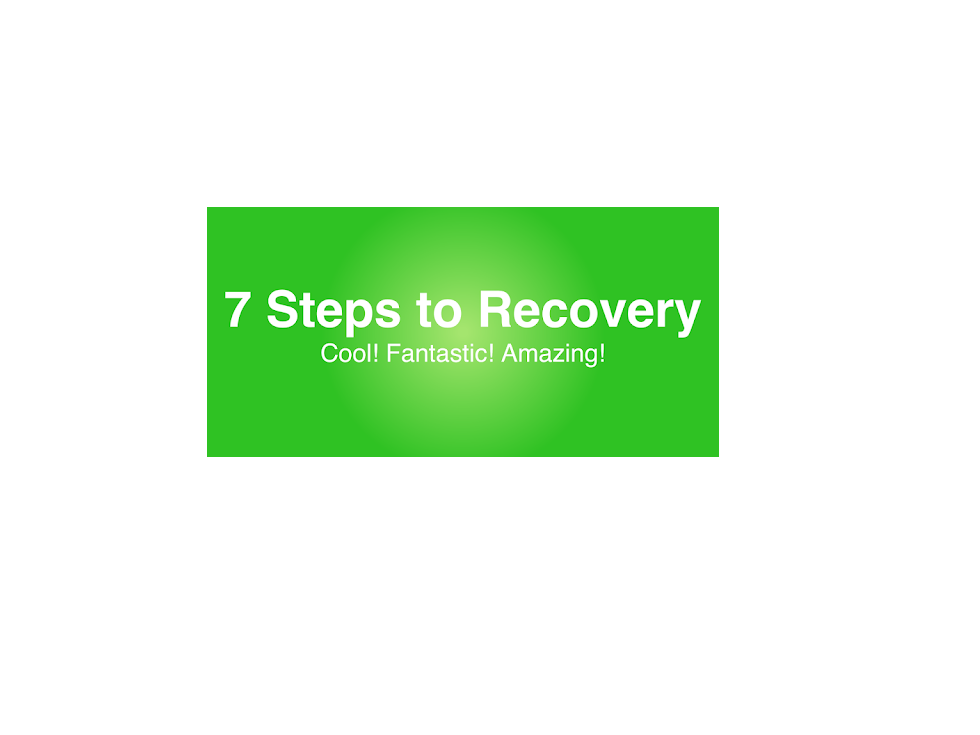
Aug 30, 2019
Each stroke survivors’ journey is a different story. The terrible and terrifying experience changes lives forever, but sometimes people choose to focus on positive things and look forward, redefining their views on life and establishing to so called “new normal”. One of these remarkable people, David Festenstein from the UK, shared with us his life story and how his stroke journey led to a recovery programme called “7 steps to recovery“.
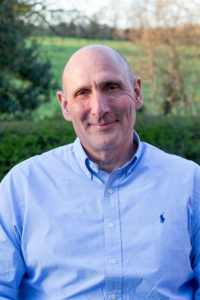 SAFE: How old were you and how did you feel when stroke happened to you?
SAFE: How old were you and how did you feel when stroke happened to you?
DF: I was 54 years old, that’s 11 years ago, I can not believe it was such a long time ago as it is always vivid in my mind when I think about it. At the time I could not understand why it happened to me as I lived such a healthy life style. I swam most days. I was going to weight-watchers and almost at my ideal body weight. I was also a non-smoker, a moderate drinker, my blood pressure was normal and there was no history of stroke in our family.
On the day of the stroke, I was very frightened I remember shaking in the bay of the stroke ward wondering what would become of me. Would I ever walk again, work again? To go from being able bodied to loosing half the movement in my body, I became numb with the uncertainty. At first I had been told that they thought I had had a stroke as a result of a blood clot and that they would be able to carry out the procedure of thrombolysis (a clot busting drug) that would allow the movement to slowly come back. So I began to run a film of getting better, but this was not to be as they discovered after a scan that it was a bleed and so they could not carry it out. They had said they would have to admit me to the stroke ward and “take it from there” so at this point I felt really terrible, hence the feelings described above.
SAFE: How did the ‘7 steps to recovery’ idea emerged?
DF: The “ 7 steps to recovery” originated from the diary and journal which I kept during my stay in hospital. The idea of the diary was to maintain my focus on gratitude, ie what I still had rather than what I had lost. At the same time holding a vision of being a better man back with my wife and children living a normal life again.
I would log the day’s events, highlighting what went well, what worked, what did not work and any overall learning. Also it gave me the opportunity to vent my frustration when I had really difficult days.
The journal allowed me to record any additional learning or observations, especially when I was learning to walk again.
My consultant was fascinated by how I applied my coaching and communication background to my recovery. He said that he thought I was one of the best recoveries he had ever seen. He thought they could learn a lot from my recovery. Firstly how my strategies could be applied to less resourceful patients than myself and secondly how they as health professionals could reflect on what they could do differently to improve the stroke recovery process overall. As a result he invited me to come back to present to the medical team when I was better.
In April 2009 and I went back to the stroke ward and presented to my consultant Dr David Collas and his medical team. In consolidating my notes I discovered there were seven distinct steps that I had taken to support my recovery. They were very excited as they could see the potential for these steps to be applied not only to stroke recovery but in fact any severe health set back.
Finally these videos are the videos that were developed in association with Oxford Brookes University for the content for the 7 Steps recovery app in 2014/15.
SAFE: How difficult was it for you to get back to your regular life after stroke, considering that you were one of the ‘lucky ones’- your recovery was remarkable, you live in the 1st world country where you can get the maximum care etc.?
DF: Although I had mobility and I could walk, I could not walk any significant distances without getting very tired. Also the way in which I was walking was far from right so I fought hard to get further physiotherapy because as far I was concerned, there was much more improvement needed. However in contrast the Physiotherapist who was treating me said “I had reached a plateau and that was a good as it gets”
I refused to accept this and as the number of sessions had run out and they would not give me any more, I engaged the Neuro physiotherapist who had treated me in hospital and the quality of my walking improved dramatically.
She had discovered that the former Physiotherapist was giving me “strengthening exercises” rather than “Neuro ones”, so no wonder I was not improving very much and reaching “this plateau”.
The other difficulty that I suffered for a long time was getting tired easily, i.e. fatigue. Furthermore as a result of having my stoke I had lost the work I had before the stroke. As I work for myself I had to start prospecting for work from scratch again and did not start working properly until April of 2009.
SAFE: In conclusion, what would be your one take away message that summarises your seven steps as you describe them in your Youtube videos?
DF: The one take away message would be that summarises the 7 steps is that at some level you can take control with your mind and begin to set the intent for your recovery and then create a vision for your life after your stroke.

Aug 30, 2019
Written by: Prof. Anita Arsovska, MD, PhD,
Macedonian Organization for a fight against stroke, SAFE Board Member
Stroke is a severe impairment of brain functions due to acute brain circulation disorder. The highest percentage of strokes (80-85%) is due to thrombosis or embolism of the blood vessels, resulting in ischemia of the brain tissue. Approximately 10-15% of strokes are due to rupture of the blood vessel in the brain, with blood flowing into the brain, causing intracerebral, intraventricular or subarachnoid bleeding.
The symptoms of stroke are:
– weakness or paralysis of the arm and leg on one side
– paralysis of the face
– inability to speak and understand one’s speech
– headache, dizziness, blurred vision
– unstable or impossible walking
– nausea, vomiting (not related to food intake)
– consciousness impairment
There are so called risk factors that lead to stroke. Risk factors that may be modified are: elevated blood pressure, elevated levels of blood sugar and lipids, heart and blood vessel diseases, smoking, overweight (especially abdominal obesity), physical inactivity, excessive consumption of alcohol and narcotics, inadequate nutrition (excessive intake of salt, sugar and fat).
Aims of nutrition therapy
– primary and secondary prevention of stroke
– regulation of elevated blood pressure, elevated levels of blood sugar and lipids, overweight
– healthy diet (use of unsaturated fatty acids, cereals, fruits, vegetables, fish, olive oil)
Nutrition
The results of numerous epidemiological studies show that nutrition affects the pathogenesis of stroke and therefore, dietary changes can be preventive. For the prevention of stroke, the Mediterranean diet, consisting of olive oil, canola oil, omega-3 fish oil, balsamic vinegar, vitamins and antioxidants, is recommended while reducing the intake of trans fats, unhealthy fats of animal origin and cholesterol. This diet is characterized by the substitution of various harmful products with nutritionally healthy alternatives, such as canola margarine instead of butter, alpha-linolenic acid instead of animal fat, whole grains, fiber and phytoestrogens instead of other derivatives.
Lipids
Previous studies on the impact of blood lipid levels and risk of stroke show different results. For example, in the Honolulu study, 7850 patients over 18 years were followed and have shown a positive correlation between elevated serum cholesterol levels and stroke. Another study analyzed 707 fatal strokes among 350,977 patients and found an increased incidence of ischemic strokes in patients with elevated serum cholesterol levels. A similar positive association was found in Oslo and Copenhagen, where 19,699 patients were followed up over a 10-year period, 693 of which have had a stroke. Most researchers believe that elevated blood cholesterol concentrations (> 8 mmol / L) are an important risk factor for stroke, especially ischemic stroke. It has been found that lowering LDL levels can prevent stroke in 35% – 80% of the cases, reducing the risk by 48% in patients with diabetes and 25% in patients with coronary artery disease.
Atkinson et al. found no increase or decrease in morbidity and mortality from stroke in middle-aged men when cholesterol concentrations decreased below 5.0 mmol / L. There are epidemiological studies that have shown a higher incidence of intracerebral (but not subarachnoidal) haemorrhage in patients with low serum total cholesterol. Low serum cholesterol levels below <4.62 mmol / L were associated with a significantly increased risk of intracerebral haemorrhage in men over 65 years of age. Increased risk was also seen in older women with low cholesterol levels, whereas no such association was seen in men and women aged 40-64 years.
Remember: There is a link between blood cholesterol levels and stroke. Cholesterol intake of up to 300 mg / day is recommended.
Cholesterol is found in egg yolk, brain, liver, kidneys, red meat (beef, veal, pork, lamb), game meat (roe, rabbit, etc.). The least cholesterol and saturated fat is found in fish, chicken and turkey breast. Saturated fat in high concentration is found in butter, sweet and sour cream, whole fat and melted cheeses, pork fat, pâté, meat cans, bacon, cheeses, sausages, salami, beef and mutton.
Frying should be avoided. If fats should be used, these should be solely of vegetable origin, such as olive oil, or soybean butter, sunflower seeds, or wheat germ, which contain linoleic acid. It should be noted that reheating the butter (eg in a deep-fryer) is not recommended, because this is increasing its hydrogenation which is very bad.
Sugar, protein, fish, meat
Studies show that high glycemic index foods increased the risk of stroke mortality (ischemic and hemorrhagic) in women in Japan, while higher sugar intake was associated with a higher risk of hemorrhagic stroke in middle-aged women and older women. Consumption of rice has been associated with an increased risk of stroke in China’s aging population and a reduced risk of cardiovascular disease in Japan.
The origin of the protein is very important in the nutrition. For example, it has been s shown that consuming fish has a protective effect against stroke. A repeated meta-analysis of 15 studies found that eating three fish during the week reduced the risk of stroke by 6%, while another study found that the risk of stroke was reduced by 17% by consuming fish on a daily basis.
Remember: Consumption of fish, especially blue fish (mackerel, anchovy, tuna, herring, salmon) is recommended for prevention of stroke, at least 2-3 times per week.
A meta-analysis of 20 studies to evaluate the effects of red meat consumption showed that the risk increased by 24% with daily consumption. The data indicate that the high intake of red meat (1 meal / day) is associated with an increased risk of stroke, while the high intake of poultry meat (1 meal / day) is associated with a 27% reduction in risk; the consumption of low fat dairy products is associated with a 11% reduction in the risk of stroke, the consumption of dairy products with whole fat, with a 10% reduction in the risk, and the consumption of nuts with a 17% reduction in the risk.
Fruits and vegetables
Greater use of fruits and vegetables in the diet is recommended, since it is associated with a reduced risk of stroke. For each supplement of fruits or vegetables per day, the risk of stroke is reduced by 6%. A meta-analysis of 9 studies, with a total of 257,551 participants (of whom 4,917 had a stroke), followed over a 13-year period, showed that consuming more than 5 servings of fruits and vegetables during the day could reduce the incidence of a stroke. Vegetables that are green in color and with leaves (such as herbs, broccoli, turnips), together with the nuts and citron juice, protect against stroke.
Whole grains
In the prevention of stroke, it is recommended to use products that contain whole grains of cereals, such as black and integral beans, cereals in various forms for breakfast, rice with husk etc. In the meta-analyzes, the introduction of whole grain products was shown to be associated with a downward trend in the incidence of stroke.
Remember: Consumption of fruits and vegetables, as well as whole grain cereals, is recommended for the prevention of stroke.
Electrolytes (sodium, potassium, magnesium, calcium)
Current studies have shown that high intake of sodium is associated with an increased risk of stroke, while higher intake of potassium through fruits and vegetables is associated with a reduced risk of stroke.
Remember: Increased salt intake is a risk factor for stroke.
Therefore, for stroke prevention, moderate consumption of salt is recommended, as well as not adding salt in the food.
The recommended intake of sodium is <2.3 g / day and the recommended intake of potassium is> 4.7 g / day.
A meta-analysis showed that the use of magnesium reduced the risk of stroke, especially of ischemic stroke. The effect of calcium use is uncertain, although meta-analysis data speak in favor against its use.
Multivitamins and antioxidants
A meta-analysis of 68 randomized studies with a total of 232,606 participants concluded that beta carotene, vitamin A and vitamin E supplements, alone or in combination, may increase stroke mortality, while the potential role of vitamin C and selenium require further research. Two further meta-analyzes for Vitamin E showed that this increased the risk of haemorrhagic stroke by 22% and decreased the risk of ischemic stroke by 10%. In randomized studies, vitamin C, vitamin B, and folic acid have not been shown to have a protective effect in relation to stroke. However, there is a positive correlation between homocysteine level and stroke. For this reason, the use of folic acid and B vitamins is recommended for patients who have elevated levels of homocysteine. Frequently, vitamin B12 levels are lower in aged population, so the use of this vitamin is justified. Numerous studies have shown that low levels of vitamin D are associated with hypertension, atherosclerosis, and cardiovascular disease. The results suggest that a high intake of vitamin D (≥600 IU / day) is associated with a lower incidence of coronary heart disease and stroke in men, but not in women.
Alcohol and caffeine
Excessive alcohol consumption increases the risk of hemorrhagic stroke, and the results of ischemic stroke are different. According to the recommendations for prevention of stroke, it is allowed to consume up to a maximum of 2 alcoholic beverages per day for men and 1 alcoholic beverage for non-pregnant women. Consumption of coffee (3-4 cups) and tea (> 3 cups) is associated with a reduction in stroke risk (17% and 21%, respectively).
Special recommendations
– It is advised to maintain body weight close to ideal
– Moderate physical activity
– Stop smoking
– Proper medical treatment
– Regulating other risk factors
– Adopt a healthy lifestyle
Conclusion
Nutrition Recommendations for Stroke Prevention:
– To limit the use of saturated and trans fatty acids to a minimum, to avoid fried foods, fatty meat, butter and margarine and creamy or whole fat dairy products (instead of consuming lean meat, chicken meat, fish, vegetables and soya products);
– To minimize the use of highly processed, preserved and frozen products;
– Limit salt use to 2300 mg per day and substitute other spices and additives;
– To limit the use of alcohol to two beverages per day, and 1 beverage for women and especially low body weight (1 beverage = 340 ml beer, 140 ml wine or 40 ml 80% alcohol);
– To choose low-fat dairy products or low-fat products instead of high-fat dairy products;
– It is important to read the labels of the products and to choose the ones that contain “whole grain”, that is, use the whole, pasta and flour of “whole grain” instead of the products with white color;
– To consume a variety of fruit fruits (if the act of swallowing is normal)
References
- Popovski A, Arsovska A. Clinical neurology-special part. Cerebrovascular diseases, NIP Studentski zbor. Skopje, 2002; 288-379 (in Macedonian)
- Fischer M, Lees K,Spence JD.Nutrition and stroke Stroke. 2006; 37: 2430–2435
- Sofi F, Cesari F, Abbate R, Gensini GF, Casini A.Adherence to Mediterranean diet and health status: meta-analysis. Br Med J. 2008; 337: a1344
- Hankey GJ.Nutrition and the risk of stroke. Lancet Neurol. 2012; 11: 66–81
- He FJ, Nowson CA, MacGregor GA.Fruit and vegetable consumption and stroke: meta-analysis of cohort studies. Lancet. 2006; 367: 320–326
- Meschia JF,Bushnell C, Boden-Albala B, Braun LT, Bravata DM, Chaturvedi S, Creager MA, Eckel RH, Elkind MS, Fornage M, Goldstein LB, Greenberg SM,Horvath SE, Iadecola C, Jauch EC, Moore WS, Wilson JA; American Heart Association Stroke Council; Council on Cardiovascular and Stroke Nursing; Council on Clinical Cardiology; Council on Functional Genomics and Translational Biology; Council on Hypertension. Guidelines for the primary prevention of stroke: a statement for healthcare professionals from the American Heart Association/American Stroke Stroke. 2014 Dec;45(12):3754-832.
- Kernan WN, Ovbiagele B, Black HR, Bravata DM, Chimowitz MI, Ezekowitz MD, Fang MC, Fisher M, Furie KL, Heck DV, Johnston SC, Kasner SE, Kittner SJ, Mitchell PH, Rich MW, Richardson D, Schwamm LH, Wilson JA; American Heart AssociationStroke Council, Council on Cardiovascular and Stroke Nursing, Council on Clinical Cardiology, and Council on Peripheral Vascular Disease.Guidelines for the prevention of stroke in patients with stroke and transient ischemic attack: aguideline for healthcare professionals from the American Heart Association/American Stroke Stroke. 2014 Jul;45(7):2160-236.
Image: Pixabay
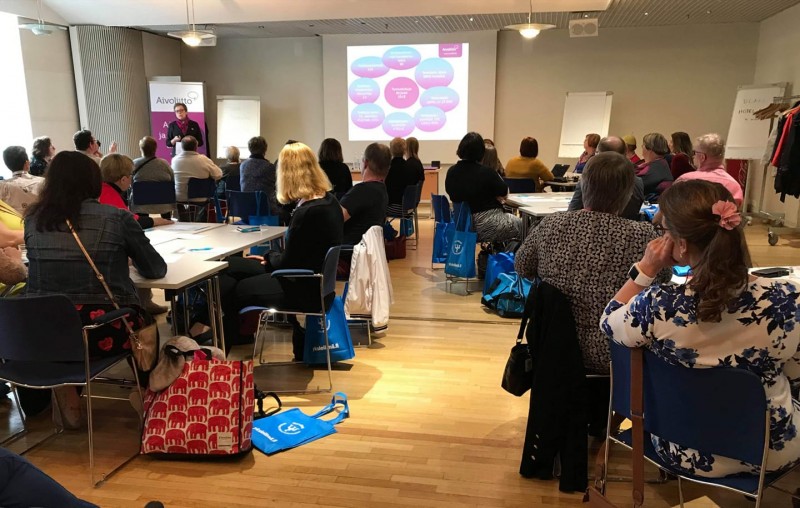
Aug 30, 2019
When it comes to stroke treatment and aftercare, Nordic countries are often believed to be among the most advanced in Europe. Even so, there is a room for improvement as we learned from our conversation with Finnish Brain Association’s Executive Director Tiina Viljanen.
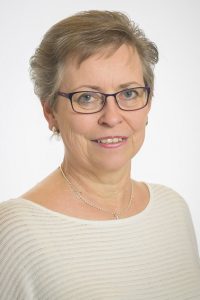
Tiina Viljanen, Executive Director of the Finnish Brain Association
SAFE: What is one issue related to the life after stroke in your country that you think needs special attention?
TV: The rehabilitation, for sure. In our country’s hospital districts, at best more than 40 per cent of stroke survivors are admitted to multi-professional rehabilitation. This is in line with national recommendations. In some hospital districts, however, multi-professional rehabilitation is only provided to a select few patients. This means that our country’s overall situation in stroke rehabilitation is poor: only 10–20 per cent of stroke survivors are referred to multi-professional rehabilitation. That is less than half of those who need rehabilitation. Every year, approximately 26,000 Finns suffer a stroke. A third of them die.
We also see that follow-up care for stroke patients in Finland depends too much on the patient’s domicile and age. Age and domicile play a role in both whether the patient receives rehabilitation and how long the rehabilitation lasts. Those over 65 are the most disadvantaged.
We work to end this kind of age discrimination and remind that studies show rehabilitation of elderly stroke patients in particular is worthwhile. We point out that timely, efficient stroke rehabilitation saves costs for society, as it reduces the need for long-term institutional care and decreases social welfare costs, among other things. Sadly, insufficient support measures for those affected by aphasia too. Therefore, the Finnish Brain Association keeps demanding that that people with a speech impairment also be provided with immediate, appropriate therapy and the possibility to express themselves.
SAFE: What would be the solution, i.e. what is your organisation’s position regarding this issue?
TV: Solution to insufficient stroke rehabilitation has to come from and by decision makers, in other words politicians, who regulate our healthcare system. Hospital districts and municipalities too have key role, while responsibility to arrange rehabilitation lies on to them. Therefore, we strive to educate, inform and influence decision makers and public service providers at all levels of the system, starting from very up from the Parliament. In the Parliament we have our own “spearhead”, the Brain -group, in which we have members from every acting political party. The most powerful argument we can use while influencing decision makers is money. Stroke is third the most costly NCD in our country. This expenditure could lowered alone by targeting rehabilitation correctly. Having said this, I have to stress that we also do work intently to raise public awareness on prevention of stroke, stroke symptoms, living with stroke and legal rights of stroke survivors.
SAFE: Please tell us more about your organisation.
TV: Finnish Brain Association is a non-governmental organization and we have just celebrated our 40. anniversary. Our funding comes from Veikkaus, the single gaming company owned by the Finnish State. We have over 40 local member associations and we operate nationwide. Association’s headquarters, The Suvituuli-center, is situated in southwest Finland in the city of Turku. Our main goal is to ensure that all stroke survivors receive high-quality and professional support and to minimize the number of stroke patients. We organize adaptation training courses, rehabilitation and recreational activities and educate our members and professionals in the field. We are active on the social media and publish the Aivoterveys (Brainhealth) magazine plus various other publications dealing with cerebral circulatory disorders. And last but not least, I would like to mention our prized Priceless processor -project through which we support the prevention of cerebral circulatory disorders.
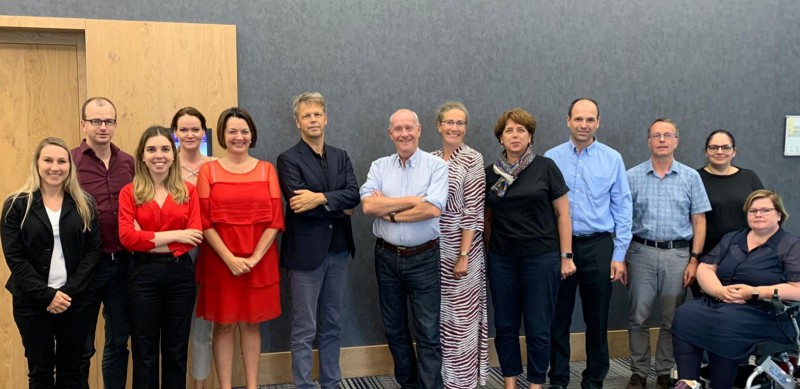
Aug 29, 2019
The first Steering Committee meeting for implementation of the Stroke Action Plan for Europe (SAPE) was held today in Munich. The Steering Committee’s main task will include a definition of a strategy framework, the Key Performance Indicators (KPIs) for monitoring the quality of care and
reaching the targets, as well as a definition of a dissemination strategy.
‘We have a golden moment now for this plan: we can prevent and treat stroke, and globally stroke plans are shifting the tide. On the other hand, if we do not all work together- health professionals, stroke support organisations, health care providers and governments- the pure number of predicted strokes will overload the health care systems of Europe.’ said Hanne Christensen, Chair of the Steering Committee.
The SAPE implementation will cover all aspect of stroke as defined by the domains: Primary prevention, Organisation of stroke services, Management of Acute stroke, Secondary Prevention, Rehabilitation, Evaluation of outcomes and quality and Life after stroke, following the recommendations from the published document. After the first definition of the KPIs, they will be finalized in close collaboration with stakeholders, including but not limited to national scientific societies and governmental representatives. A monitoring platform will be established to ensure accountability in reaching the targets. A dissemination strategy will be further defined in collaboration with stakeholders.
To increase the impact of this initiative (SAPE), the Steering Committee will collaborate with other existing initiatives in improvement of quality in stroke care in Europe. Within that frame, a collaboration with IRENE-COST, World Stroke Organisation (WSO), WHO Europe or other stakeholders was discussed in the Steering Committee meeting in Munich.
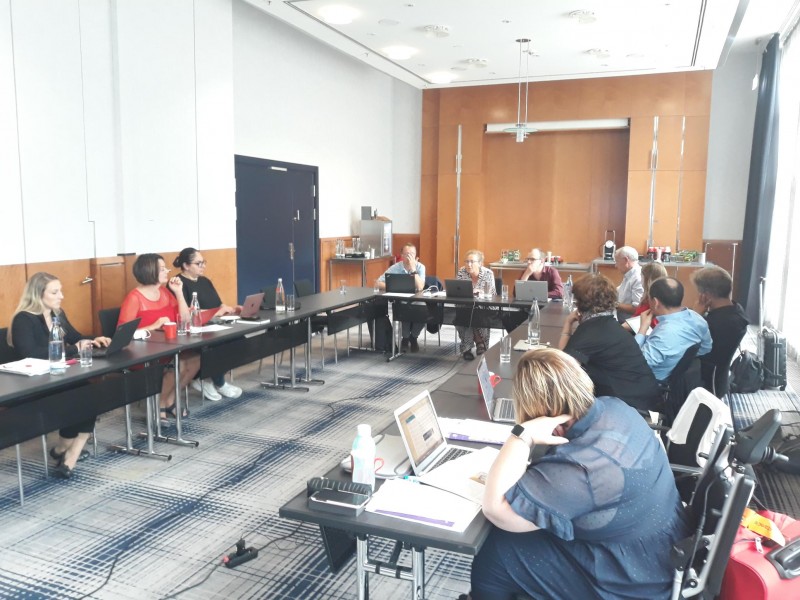
About the Stroke Action Plan for Europe
The Stroke Action Plan for Europe 2018-2030 is a document created as a result of collaborative work between SAFE and ESO.
Building on the preceding Helsingborg Declarations of 1995 and 2006, the Stroke Action Plan for Europe creates an aspirational framework to drive healthcare policy, research priorities, local stroke management and patient-focused care to meet the need demonstrated in the ESO/SAFE Burden of Stroke report, with €45 billion direct and indirect healthcare costs each year, a 34% increase in strokes by the year 2035 due to the ageing population, and huge variations in the level of stroke care available across Europe.
The popular version of the Stroke Action Plan for Europe 2018-2030 can now be downloaded from HERE.
The scientific version of this document is also available starting from today and can be downloaded from the following LINK.
About the Steering Committee for implementation of the Stroke Action Plan
The Steering Committee consists of one chair, two co-chairs (one from SAFE, one from ESO), eight Steering Committee members (six from ESO, two from SAFE) and two advisors (ESO).
Members of the Steering Committee:
Chair (ESO): Hanne Christensen
Co-Chair (SAFE): Arlene Wilkie
Co-Chair (ESO): Francesca Romana Pezzella
Members (SAFE): Grethe Lunde, Jelena Misita
Members (ESO): Bart van der Worp, Martin Dichgans, Diana Aguiar de Sousa, Robert Mikulik, Cristina Tiu, Urs Fischer
Advisors: Bo Norrving, Valeria Caso
ESO support: Luzia Balmer
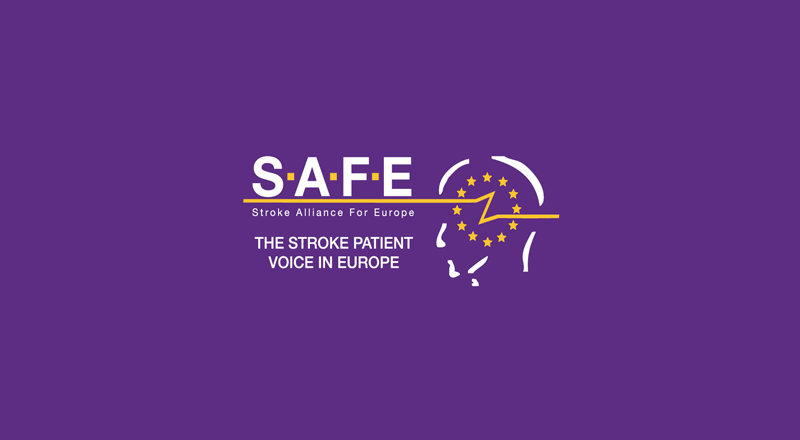
Aug 23, 2019
SAFE is very pleased to announce the new Director General, Arlene Wilkie, commenced in post on the 12th August, leading and overseeing the delivery of all SAFE activity and projects, working with our existing experienced team of Jelena Misita, Communications Manager, Gary Randall, SAFE European Research Officer, Lucinda Shaw, Partnerships Manager and Sandra Jackson, Secretariat.
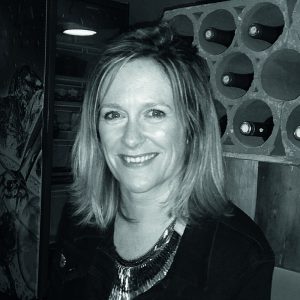
Arlene Wilkie, SAFE Director General
Arlene Wilkie, the new Director General, comes with a wealth of experience and expertise, derived from a variety of organisations and roles over the last twenty years in the healthcare sector, primarily in patient focused organisations. These include Director of Research and Policy at Breast Cancer Campaign, Chief Executive of the Neurological Alliance (a membership organisation of 70 neurological organisations in England), Chief Executive of The Migraine Trust, and Interim Director of Services and Influencing at the Brain Tumour Charity UK.
“I am so pleased to have joined SAFE. In the brief time I have been within here I have been so impressed by the passion of the staff and the board, and their determination to see a reduction in the number of strokes in Europe and the impact they have on peoples lives. I will strive to raise the profile of stroke and stroke survivors and ensure all is done to achieve the stroke action plan for Europe. I am also really looking forward to getting to know and working with all our supporters and members.” said Arlene.
One of Arlene’s great strengths is alliance building, particularly around policy development and implementation, and in her role she will be co-chairing the implementation committee of the Stroke Action Plan for Europe, and playing a leading role in our partnership group. Arlene can be contacted at arlene.wilkie@safestroke.eu
“SAFE has been through a very thorough recruitment process, and from over 130 initial candidates we are thrilled that Arlene has agreed to join us. Her track record is very impressive and over the next few years with the need to ensure sustainability of SAFE whilst pursuing important objectives such as the Stroke Action Plan for Europe and the strengthening of stroke associations in each country of Europe we know we will benefit from her leadership. The appointment of a Director General is a bold step and demonstrates SAFE’s belief that stroke care and the needs of stroke survivors must be pushed higher up the agenda.” stressed Jon Barrick, SAFE President.
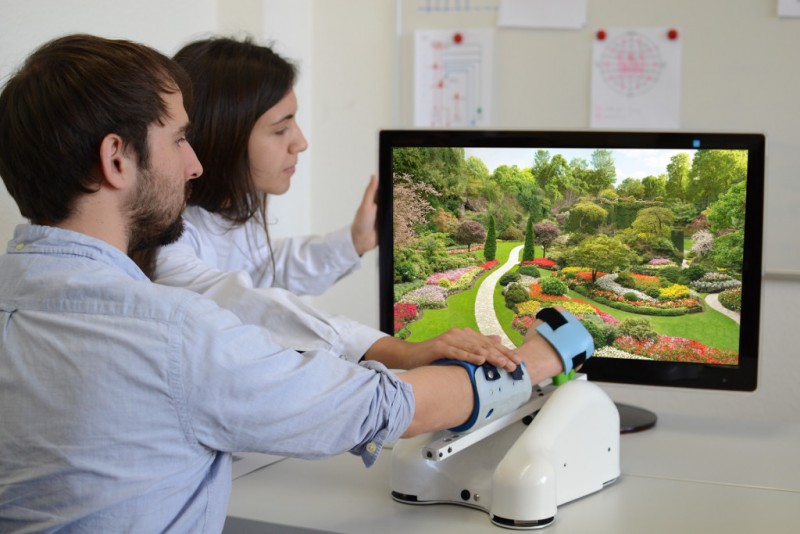
Aug 23, 2019
Project AMoRSA
AMoRSA stands for “Adaptive and highly motivating platform for the rehabilitation of patients with arm palsy following a stroke“. The project kicked off on March 1st, 2017 (ending February 29th, 2020).
MOTIVATION
In Europe, millions of people live with chronic paralysis after a stroke. An efficient strategy for systematic rehabilitation measures that is suitable for everyday use can help patients regain their mobility and carry out important everyday activities such as eating, drinking or dressing without outside help.
GOALS AND PROCEDURES
The aim of the project is to enable stroke patients with complete arm paralysis to rehabilitate their mobility providing them with complete arm paralysis with efficient, highly motivating and systematic neurorehabilitation suitable for everyday use. For this purpose, a training system will be created whose central element is a brain-muscle-machine-interface, which controls an exoskeleton attached to the paralyzed arm. The movement feedback generated by the actuators reactivates compromised connections between brain and muscles closing the brain-to-muscle loop and producing functional neuroplasticity. In addition, the rehabilitation system is embedded in a digital health game that intuitively communicates health information and training progress to patients and continuously motivates them.
INNOVATIONS AND PERSPECTIVES
By combining an orthotic robotic system with a direct feedback function, a novel training system for neurorehabilitation will be developed and the first clinical pilot will be performed during the project. This rehabilitation environment enables chronically paralyzed stroke patients to participate in life without restrictions again.
SURVEY
The burden of stroke is dramatic at many levels and there is a lack of controlled clinical trials and cost/efficacy analyses to incorporate new methods into everyday clinical practices. Furthermore, in many of the new developments and therapies, there is a clear lack of stakeholders involved during clinical research to clinical trials and practice transition. Current trends in stroke rehabilitation include the use of robotics (mainly to compensate therapists shortage and increase of demand), the use of serious games (computer gaming, virtual and augmented reality) to increase patients’ engagement and intensity of training, the telerehabilitation (home-use video games and training and movement assessment gadgets) and the use of neural interfaces to re-activate dormant or to generate via neuroplasticity mechanisms, connections between brain and muscles. All these components are present in AMORSA project.
With this survey, we want to investigate the demographics of the steadily changing stroke survivors community (including not only patients but their caregivers and therapists), their common limitations, interests and their opinion about these new rehabilitation trends. Furthermore, we want to quantify the potential adoption of new-coming treatments/therapies based on these trends. We have designed 3 different surveys, one for the patients, another for their caregivers (family and relatives) and the last one for therapists (neurologists, physiotherapists, etc).
Patients: we want to quantify the a) impairment level of the patients, especially the chronic ones; b) their current involvement in treatment, prevention or assistive measures; c) their use of technology (TV, smart-phone, video-games, etc) and their technology literacy; d) expectation regarding new therapies based on the mentioned trends; e) acceptable duration and intensity of rehabilitation therapies based on the trends and their acceptance rate; f) social aspects within the stroke community (e.g. interest in patients forums); g) the cost/benefit or compromise of rehabilitation measures based on the trends (e.g. acceptable specifications of an implanted solution for rehabilitation or assistive technology and the movement restoration achieved); h) interest in home-based rehabilitation gadgets based on the trends.
Care-givers: we want to quantify the almost the same as for the patients but from their perspective (normally we have observed a significant difference in perception in aspects of interest, motivation, impairment, etc);
Therapists: we want to quantify their a) demographics and skills; b) the clinical assessment scales (e.g. ARAT, MRC, NIHSS, Fugl-Meyer) and rehabilitation methods used (e.g. robots, mirror, group therapies); c) their service characteristics/limitations (e.g. number of patients per therapist, time per session etc); d) new therapies based on trends minimum requirement to be adopted (e.g. preparation time, easy to use etc); e) compensation limitation to accelerate the adoption of new therapies; f) relevance of predictor of recovery or biomarkers for patients stratification for rehabilitation therapies; g) their opinion on cost/benefit or compromise of rehabilitation measures based on the trends (e.g. acceptable specifications of an implanted solution for rehabilitation or assistive technology and the movement restoration achieved); h) interest in home-based rehabilitation gadgets based on the trends.
Please take part in this survey by clicking on these links below:
Patients: https://www.soscisurvey.de/amorsa_reha1/
Relatives / caregivers: https://www.soscisurvey.de/amorsa_reha3/
Therapists: https://www.soscisurvey.de/amorsa_reha2/
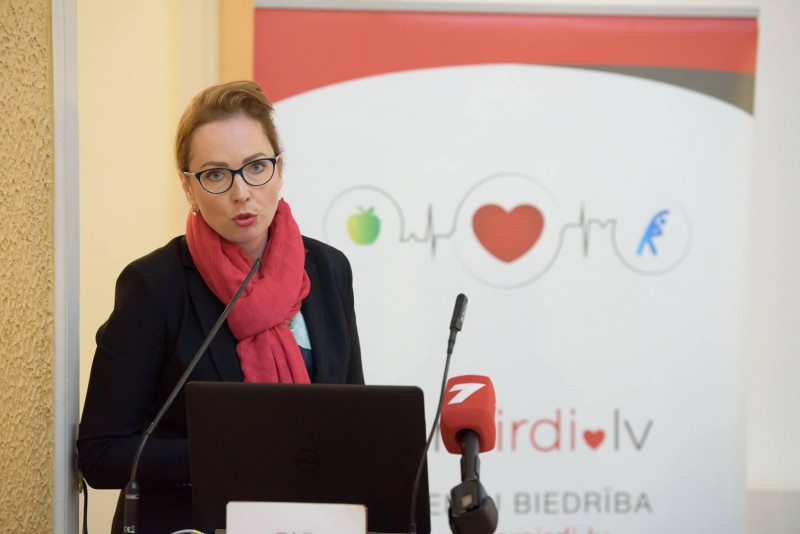
Aug 23, 2019
This week, Inese Maurina from Latvian organisation Parsirdi.lv, offered SAFE team an insight into the needs of the Stroke Survivors and #LifeAfterStroke issues in her country.
SAFE: What is one issue related to the life after stroke in your country that you think needs special attention?
IM: I would like to stress two things:
1) Rehabilitation – there are long waiting lists to get the rehabilitation services after stroke. Patients and their relatives are also confused because of lack of sufficient information on where to go, what to do next, where to look for help, where to get rehabilitation services, etc.
Due to these reasons lot of patients receive rehabilitation too late or not as much as needed.
2) Availability of medicines and patient adherence
Increasingly effective medications are available for the prevention and treatment of stroke risk factors, but often patients cannot afford to pay for them, so they stop taking them or even do not start to use medicines. This leads to very serious consequences – illness, disability or death. Similarly, many patients do not qualify for medication reimbursement due to very strict requirements.
According to data of Stroke Units, there are many patients who return to the hospital and one of the reasons is discontinuation of medication. This is due to both – the financial capacity of the patients and also the lack of understanding of the need for medication and poor cooperation with their physicians and specialists.
SAFE: What would be the solution, i.e. what is your organisation’s position regarding this issue?
IM: Not only stroke has serious health consequences, but it also has a very heavy social and financial burden on patients, their families and society as a whole. According to estimates of the Latvian Health Economics Association, patients and their relatives bear almost one third of the total cost of stroke treatment in Latvia, which is over 70 million euros per year. According to health economists, such a “co-payment” for stroke patients is too high given the high rates of disease mortality and disability. The burden of the disease on the social security budget could be substantially reduced by ensuring timely stroke prevention, treatment and quality rehabilitation.
It would be important to increase the healthcare budget spent on the post-stroke rehabilitation services in order to make this service available to all patients and without long waiting lists. There is also a need for specialists and innovative technologies to improve the rehabilitation services in Latvia. It would be also important to develop clear patient pathways information materials to be disseminated to both stroke units and GPs.
The health budget for stroke prevention needs to be increased, as it will reduce the number of sudden strokes and thus require lower treatment, rehabilitation and disability costs. There is a need to increase also budget for innovative and effective medical medicines and to improve the collaboration of patients and doctors in order to increase the patient adherence.
SAFE: Please tell us more about your organisation.
IM: ParSirdi.lv is non-governmental organization founded in 2011, bringing together various heart and cardiovascular disease patients and their relatives. Our mission: to reduce the impact of heart and cardiovascular diseases by promotion of healthy living, educating society regarding the risks of diseases, ensuring the access to health care information and advocacy of patients.
Our aims are:
Protecting the rights of cardiovascular patients to access quality medical care (medicines, devices and services);
Identify and reduce factors that prevent patients with cardiovascular disease from receiving quality healthcare;
Improve the quality of life of people with cardiovascular diseases through active involvement in the development of national cardiovascular policy, in cooperation with state and municipal institutions;
Facilitate the exchange of information between patients, medical professionals and the public with the aim of helping patients with cardiovascular disease to successfully organize their daily lives, integrate into public life, and achieve professional success;
Carry out educational work to raise awareness among cardiovascular patients and the general public about cardiovascular disease, its prevalence, risk factors and treatment;
Promote a healthy lifestyle;
Develop projects to improve the quality of life of patients with cardiovascular disease.
Since 2013 patient organization ParSirdi.lv is an associated member of the international organization SAFE (Stroke Alliance for Europe).
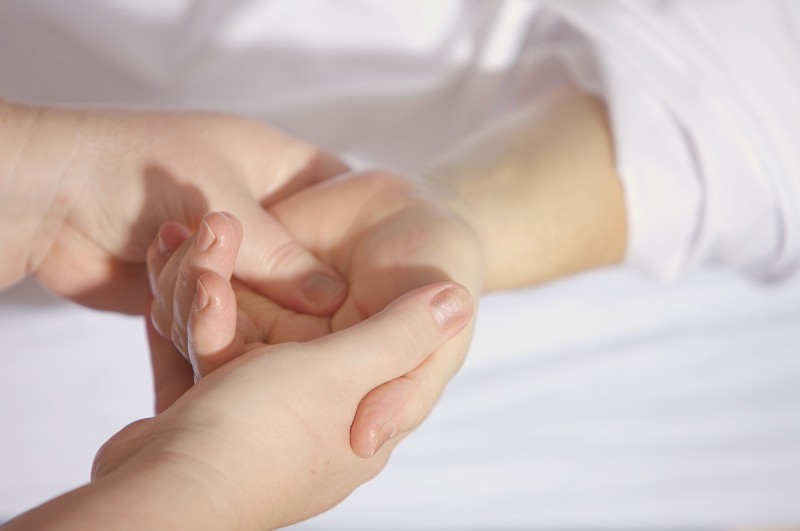
Aug 23, 2019
Do you or someone you know have experience with spasticity and Botulinum Toxin Type A injections?
SAFE invites you to participate in an international survey, conducted by Carenity, an online patient community, and biopharma Ipsen to help advance medical research and improve the lives of other patients.
Both patients and caregivers of patients with spasticity due to stroke (as well as traumatic brain injury or spinal cord injury) who are currently receiving Botulinum Toxin Type A injections or who have stopped receiving these injections less than a year ago can participate.
Botulinum toxin effect usually peaks around 4 to 6 weeks after injection, then it slowly decreases. This decrease is called the waning of botulinum toxin effect. The aim of this survey is to better understand patients’ experience with botulinum toxin type A injections, in particular:
– to better understand how patients experience the waning of botulinum toxin type A effects
– to identify the impact of the waning of botulinum toxin type A effects on the patient’s quality of life
– to describe patient populations profile
– to assess the reasons for stopping botulinum toxin type A injections
This survey will be the subject of communications during scientific congresses or scientific publications that will be redacted in collaboration with an international team of medical experts.
A synthesis of the results will be made available after the publications.
This international survey is conducted in Europe (France, Germany, Italy and the UK) and in the US until September 13th.
It is available in 4 languages:
English: https://member.carenity.co.uk/newSurveyBymail/0/38/0/0
French: https://membre.carenity.com/newSurveyBymail/0/107/0/0
German: https://member.carenity.de/newSurveyBymail/0/26/0/0
Italian: https://member.carenity.it/newSurveyBymail/0/25/0/0
Thank you very much for your participation!
Participation in this survey is unpaid.
To find out more about how your data will be processed and how to exercise your rights, read the survey information page, accessible when you click on the link provided above in this text.
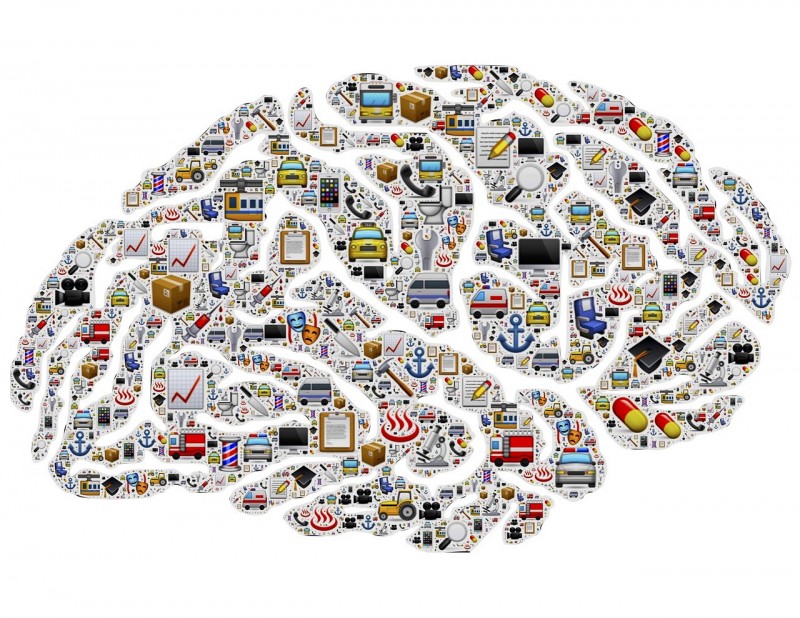
Aug 21, 2019
First published on ARNI Institute for Stroke Rehabilitation website
A change in cognitive ability is common after a stroke. Did you know that as many as two-thirds of stroke survivors may experience cognitive impairment as a result of their stroke.? If this is you, or you know someone who seems possibly to be going through such difficulties, here’s 18 steps you can take to try and improve cognition difficulties after stroke:
First, what is cognition?
Put simply, cognition is thinking; it is the processing, organising and storing of information – an umbrella term for all of the mental processes used by your brain to carry you through the day, including perception, knowledge, problem-solving, judgement, language, and memory. The brain’s fantastic complexity means that it can collect vast amounts of information from your senses (sights, sounds, touch, etc) and combine it with stored information from your memory to create thoughts, guide physical actions, complete tasks and understand the world around you.
A stroke can affect the way your brain understands, organises and stores information. This brain injury can result in damage to the areas of the brain that are responsible for perception, memory, association, planning, concentration, etc. The severity and localisation of the stroke will effect the type and level of difficulties experienced by an individual, and will vary from person to person.
It can be difficult to plan and organise daily tasks. The brain is constantly working in the background, allowing us to complete a task based on prior knowledge, experience, and learned behaviour.
You don’t have to consciously think how to boil the kettle, change TV channels or put on your socks before your shoes: you just do it. But damage to the brain can result in problems with these planning and execution mechanisms.
You might not be able to think how to do a simple task, or you may get the sequence wrong (for example, shoes before socks). You might have trouble with orientation, which could include not knowing the date, day of the week, or even who you are with. Problem-solving too can become difficult. Making decisions, solving problems, understanding numbers and managing money can be a challenge.
Good cognitive function also relies on memory. The brain uses 2 types of memory to hold information, the long and short term memory. Short-term memory is the temporary store for small amounts of information. This information is kept readily available and can be recalled quickly. For example, a phone number can be remembered long enough for you to dial it. Long-term memory is where you keep your experiences, thoughts and feelings from the past and things stored here can be stored indefinitely. Memory problems could result in difficulty storing or recalling information. This could include problems remembering appointments, important dates or in the case of short term memory, what you were about to do, or what somebody just said to you.
Problems with concentration are common. Concentration is required for effective cognitive function, as many of your thinking process require concentration. Concentration requires our brain to filter out much of the information coming in from your conscious thinking, so you are not distracted by it.
Stroke can impact on this ability because of damage to the areas of the brain responsible for this, and also because tiredness, pain and emotional problems have an effect of the ability to stay focused and concentrate. This could result in difficulties when trying to follow a television programme, or conduct a conversation with a friend. Multi-tasking too is difficult.
18 Things to try
- Cognitive problems are confusing and frustrating. But, there are some things you can to do help. Most improvements occur in the first 3 months after a stroke, after which they slow down, but the brain will keep creating new neural pathways after this time.
- To help with memory and perception problems, try using a diary, day planner, calendar or notepad. Writing down appointments and creating to-do-lists can help you to remember them.
- Photos and pictures can help to ‘trigger’ your memory.
- Check your calendar, newspaper or diary to help you remember the day and date.
- Make notes of important conversations.
- Use notes, lists and labels around the house and help prompt you to remember. Mobile phones are a great resource. Set alarms, reminders and memos to remind you throughout the day.
- It is important not to overload yourself, finish one task before you start another. Plan your day and prioritise tasks.
- Try slowing the activity down, working through a step at a time.
- Keep instructions clear and short, no more than 5 or 6 words to a sentence, and only 1 or 2 instructions at a time.
- …
Please read the full list here.

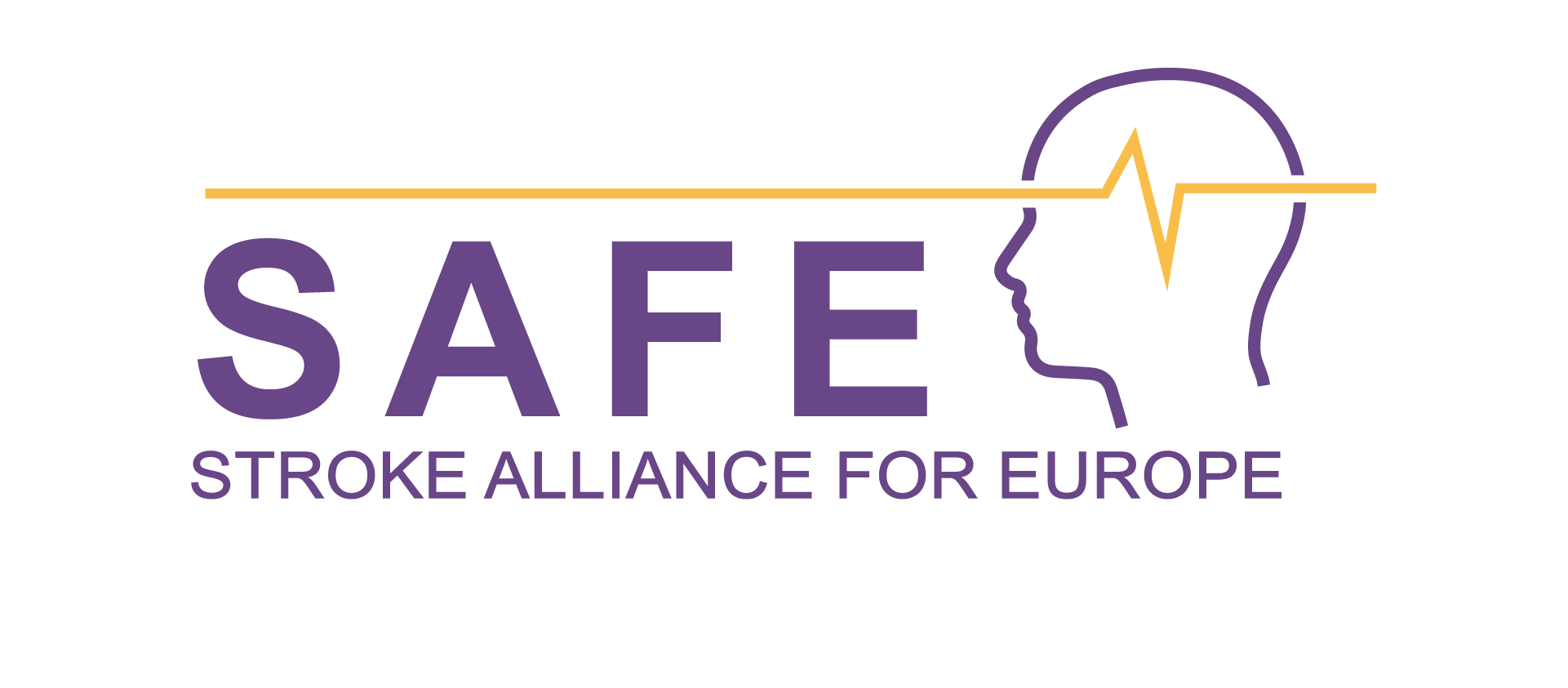

 SAFE: How old were you and how did you feel when stroke happened to you?
SAFE: How old were you and how did you feel when stroke happened to you?










